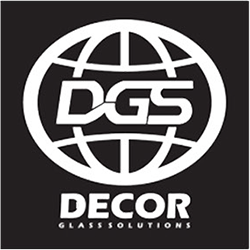Glass-ceramics are mostly produced in two steps: First, a glass is formed by a glass-manufacturing process. The glass is cooled down and is then reheated in a second step. In this heat treatment the glass partly crystallizes. In most cases nucleation agents are added to the base composition of the glass-ceramic. These nucleation agents aid and control the crystallization process. Because there is usually no pressing and sintering, glass-ceramics have, unlike sintered ceramics, no pores
Glass ceramic materials are typically characterised by:
High strength
High impact resistance
Low co-efficient of thermal expansion, sometimes even negative co-efficient of thermal expansion
Good resistance to thermal shock
A range of optical properties, from translucent to opaque and sometime opalescence.
Glass-ceramics are mostly produced in two steps: First, a glass is formed by a glass-manufacturing process. The glass is cooled down and is then reheated in a second step. In this heat treatment the glass partly crystallizes. In most cases nucleation agents are added to the base composition of the glass-ceramic. These nucleation agents aid and control the crystallization process. Because there is usually no pressing and sintering, glass-ceramics have, unlike sintered ceramics, no pores.
Glass Ceramic Materials
Glass ceramic materials have the same chemical compositions as glasses but differ from them in that they are typically 95-98% crystalline by volume, with only a small percentage vitreous. The crystals themselves are generally very small, less than 1?m and most often very uniform in size. Furthermore, due to their crystallinity and network of grain boundaries, they are no longer transparent.
Properties of Glass Ceramic Materials
Production of Glass Ceramic Materials
Glass ceramic components are formed using the same processes that are applicable to glass components. To convert them from a vitreous glass material into a crystalline glass ceramic material they must be heat treated or devitrified.
Devitrification can occur spontaneously during cooling or in service, but is most commonly incorporated to produce glass ceramics. It involves heating the formed glass product to a temperature high enough to stimulate crystals to nucleate throughout the glass. The temperature is then increased, which induces growth of the nuclei, crystallising the remaining glass.
Nucleation requires a critical number of atoms converging to form a nucleus. When the nucleus reaches critical size, nucleation occurs. In many glass compositions, nucleation is hampered by the fact the material is silica-based and highly viscous, making it difficult for the required atoms to come together. The crystal compositions can also be complex making nucleation difficult. These factors aid glass forming and cooling without crystallisation.
The devitrification heat treatment must be carefully controlled to ensure the maximum number of nuclei are formed and that these nuclei grow into a uniform fine crystal structure. In order to obtain a high concentration of nuclei throughout the structure, it is common to add a nucleating agent to the glass composition.
Glass ceramic materials are typically characterised by:
- High strength
- High impact resistance
- Low co-efficient of thermal expansion, sometimes even negative co-efficient of thermal expansion
- Good resistance to thermal shock
- A range of optical properties, from translucent to opaque and sometime opalescence.
